
- •For the fulfill the overall objective student should be able
- •Organizational structure of the practical classes
- •Special-purpose Training Tests for study the topic level testing
- •For the fulfill the overall objective student should be able
- •Organizational structure of the practical classes
- •Indirect Method:
- •Special-purpose Training Tests for study the topic level testing
Ministry of Health Protection of Ukraine
Kharkov National Medical University Orthopedic Dentistry Department
|
“APPROVED” The Head of Orthopedic Dentistry Department Kharkov National Medical University Professor MD, DDS, PhD ___________Victor P.Golik " 30 " August 2012.
|
Methodological instruction
to the practical class VII TERM
TOPIC № 91
(for teacher)
Module 3
«COMPLETE removable PROSTHODONTICS»
MAKE ON THE BASE OF CREDIT-MODULE SYSTEM ACADEMIC PROCESS ORGANIZATION FOR DENTAL FACULTY STUDENTS OF ΙΙΙ-IV LEVELS ACCREDITATION HIGHER EDUCATIONAL
Contents module 2
Laboratory procedures complete dentures. Impact of basis laminem dentures on tissues oral cavity.
Methodological instruction is composed
by assistant NATALIYA N. BreSLAVETS
Kharkov 2012
Topic № 91: |
FIXATION COMPLETE DENTURES. ADAPTATION FOR COMPLETE DENTURES. |
Technological card PRACTICAL CLASSES
Stages of practical classes |
Time |
Equipment |
Place |
The organization employment and training workplaces |
10 |
Visual slides, posters, phantoms table. |
Classroom |
Analysis of educational homework questions |
35 |
Tables: "Groups of teeth, anatomy jaws" "Teeth, dentitions”. "Tests for topics control. |
Classroom |
Demonstration of practical skills for independent work of students |
20 |
Phantoms jaw, phantom skull, plaster models, design prostheses. Thematic patients. |
Clinical cabinet |
Independent work of students with the advice of the teacher |
65 |
Phantoms jaw, phantom skull, plaster models, design prostheses. Thematic patients. |
Clinical cabinet |
Summing up the results classes and give homework |
5 |
|
Classroom |
CURRENT TOPICS.
Delivery of the complete denture is very important and appropriate step in Implant edentulous jaws. It requires proper attention from a doctor at all its stages. Matter how carefully the doctor will this step depends on how it will be convenient to use this prosthesis patient. Very often, on the date of prostheses to establish the presence of these or other defects is not possible. Basically, at the time set only rough defects in design of prostheses, such as an error in the determination of the central Bite.
GENERAL PURPOSE OF CLASSES. To be able to correct errors and adjust the prosthesis in the period of adaptation.
For the fulfill the overall objective student should be able
specific objectives |
Purpose of the initial level of knowledge |
1. Know the algorithm for the examination of the patient in clinical prosthodontics. |
1. To be able to conduct the clinical examination of the patient, the diagnosis, the chosen design. |
2. Know the sequence of stages of examination of patients in clinical prosthodontics. |
2. To be able to conduct the first stage of examination of patients: survey and record the data in the patient card dental patient (form 043/0). |
3. Know the structure of the upper and lower jaw. |
3. To be able to determine the relationship of the upper and lower jaw. |
4. Know the structure of the oral mucosa. |
4. To be able to determine the presence of clinically submucosal layer in different parts of the oral mucosa. |
5. To be able to formulate a diagnosis and to complete ambulatory medical record. |
5. Know the structure of the diagnosis and the types of medical records, which is used in prosthetic dentistry clinic |
Theoretical questions ON WHICH BASIS PERFORMANCE OF TARGET KINDS OF ACTIVITY IS POSSIBLE
Adhesion for complete dentures
Cohesion for complete dentures
Fixation for complete dentures
Adaptation for complete dentures
Literature recommended
Main Sources:
Prosthetic treatment of the edentulous patient. Fourth edition. R.Basker, J.Davenport. Blackwell. 2002 – 316 p.
Complete Denture. Manual. Robert W. Loney, DMD, MS. 2009.- 99 p.
Duncan, J. P., Taylor, T. D.: Simplified complete dentures. Dent Clin North. 2004;48:625.
Felton, D. A., Cooper, L. F., Scurria, M. S.: Predictable impression procedures for complete dentures, In Engelmeier, R.L., ed. Complete Dentures. Dent Clin North Am. Philadelphia: W.B. Saunders, 1996;40:39-51.
Petropoulo.s, V. C., Rashedi, B.: Compute denture education in U.S. dental schools. J Prosthodont. 2005:14:191-7.
Organizational structure of the practical classes
(Implementation of practical class plan):
At the beginning of the class a teacher calls the register and designates a student on duty, names the topic and purpose of the class, finds out unclear questions, which appeared during independent work of students.
Then the teacher analyzes subject questions, tasks of students’ research work and methods of practicing skills in accordance with the methodologic instruction, by means of actively questioning all students of the group.
The teacher is guided by the extent of knowledge obtained by the students during their independently studying the material in the textbooks, lecture notes and methodologic instructions, as well as preparing students’ research work in the albums for independent work.
Besides, the teacher can choose to check the hometask in oral or written form, as well as in mixed and oral-and-written form. The teacher can use situational tasks and test questions in addition to routine subject questions.
Having controlled the students’ knowledge for the class, the teacher demonstrates to the students methods of preparation and obtaining of a print thermoplastic impression material.
After the demonstration the students start to independently train practical skills on each other under supervision of a senior laboratory assistant or the teacher.
At the end of the class the teacher gives marks for oral answer or written work, for independent students’ work, signs the protocol of the laboratory work, as well as names the next topic and questions for study.
Summary



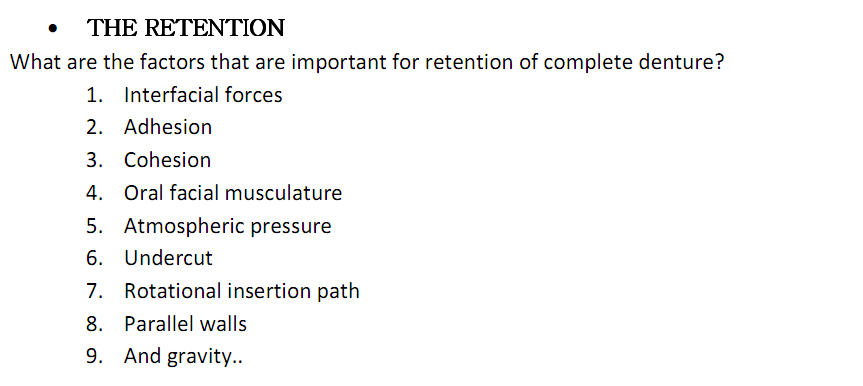
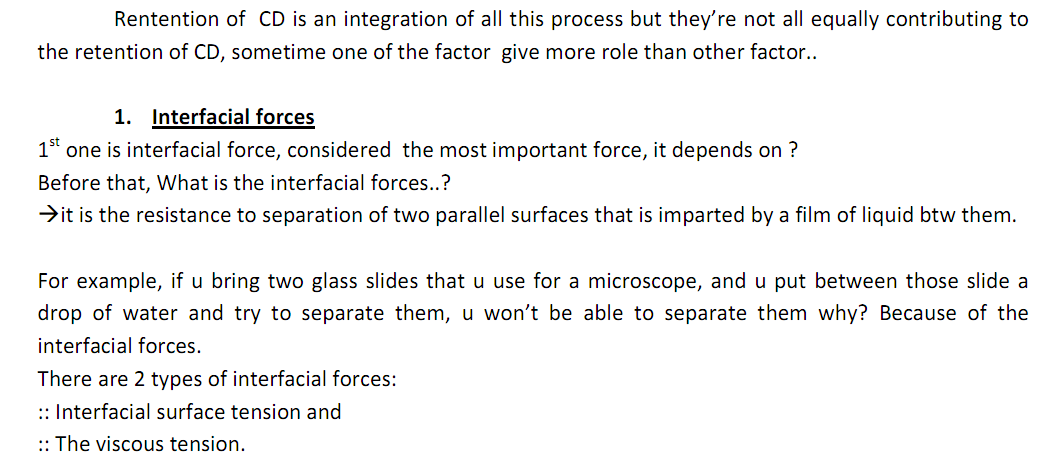
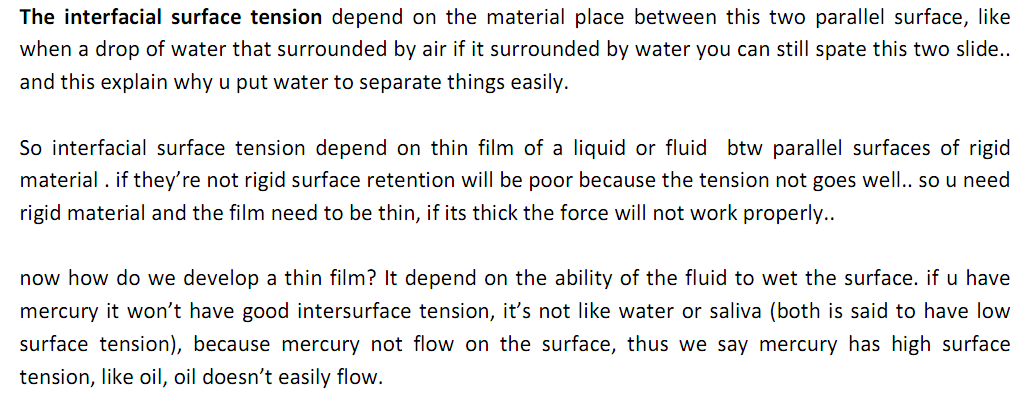


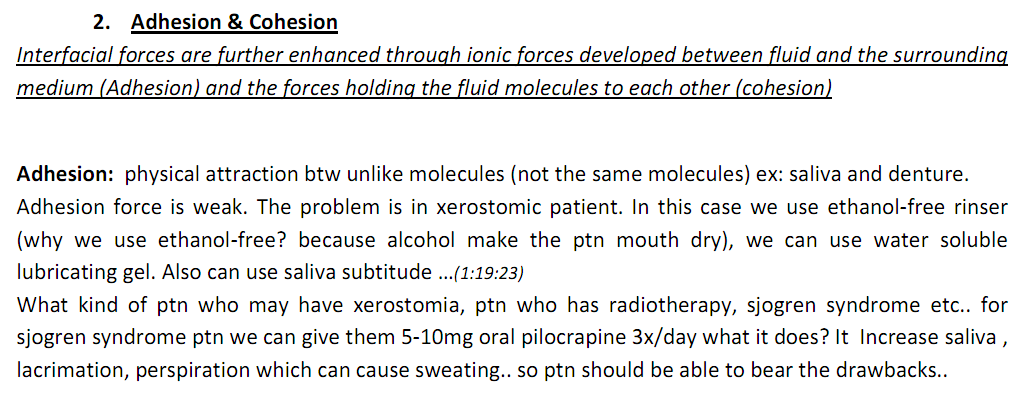







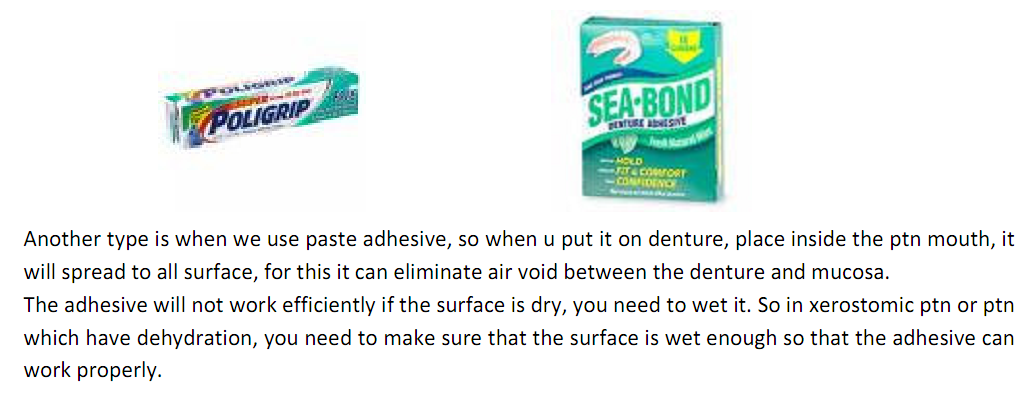



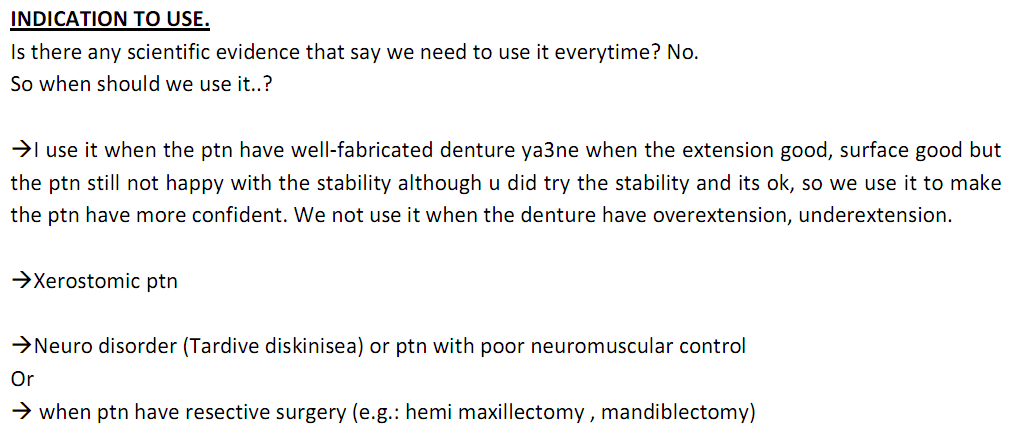


Advice for patient according to the period of adaptation to prosthesis:
The term "adaptation" means adjustment, fitting. In terms of physiology orthopedic treatment of complete romovable dentures is a very serious interference in the human body and for the doctor to underestimate its complexity is unacceptable.
In the beginning use of prosthesis may cause inconvenience concerning period of patient's adaptation to the prosthesis. Adaptation is adjustment of the patient to the prosthesis, as well as adaptation of the prosthesis to prosthetic bed tissues at rest and during chewing. Prosthesis are an irritant to the tissues of the mouth and body as a whole. An important component of irritation is the accumulation of monomer from plastic basis, and its toxic and allergic effects, microbial homeostasis of mouth is also interrupted. No less important is the influence of the prosthesis as the psychoemotional factor. The reason for this is psychosomatic, social and age factors. Kurlyandsky V.Yu. Was the first to study adaptation problems. He distinguished the following phases of adaptation:
The first phase - the phase of excitation (the first day of the imposition of the prosthesis), there is increased salivation, dry vomiting, impaired articulation, chewing and swallowing.
The second phase - the phase of partial inhibition (from 1 to 5 days after the imposition of the prosthesis) when returning to normal salivation, articulation, soft tissue tension, restoring of chewing function, gag reflex expires.
The third phase - the phase of complete inhibition (5 to 33 days after the imposition of the prosthesis) when the patient does not feel the prosthesis as a foreign object, chewing function is maximally renewed.
The time during which there is complete adaptation to the removable prosthesis differs from 1 to 33 days. During this period there such unpleasant manifestations, such as nausea or increased allocation saliva, diction disfunction. During the meal the taste, thermal and tactile sensations are reduced. The period of adaptation is much affected by the presence or absence of pain under the basis of the prosthesis. Pain under the basis of the prosthesis may occur at the end of the first day after the imposition of the prosthesis. The pain is worse during biting food, chewing, and conversation, in which case you should turn to the prosthodontist. If within the first day after occurrence of pain under basis of the prosthesis, the patient doesn't have a possibility to visit the doctor, and use of prosthesis causes pain, prosthesis should be removed for the time of sleep. But the next morning, several hours before visiting the doctor, it is necessary to wear prosthesis. This will allow the doctor to define better the places of excessive pressure and to adjust the prosthesis. In some cases, the doctor carries out correction of prosthesis 2-3 times before complete elimination of pain. If the patient uses full removable prosthesis on both jaws, then in this case you should observe the following sequence: first putting on the lower, and then - the upper prosthesis. Removing of prosthesis should be done in reverse order. In order to accelerate improvement of diction it is recommended to talk more and to read aloud. To speed up adaptation period, the first 5-7 days, it is recommended to leave dentures in mouth at night, after having cleaned and washed thoroughly; in the morning procedure is repeated. To improve the fixation of prostheses it is recommended to use creams for fixation, such as Korega, which is applied to the clean and dry inner surface of the basis, and then it is necessary to impose a prosthesis and hold it within 3-5 minutes, pressed it with teeth of the opposite jaw. Using creams provides steady fixation and joining of the prosthesis to the mucosae of prosthetic bed within 1-16 hours. It is necessary to keep dentures in a special container for removable prosthesis after a thorough cleaning. Once or twice a month prosthesis should be subjected to purification by means of special purification tablets. With the help of purification tablets you can remove stains from tea, coffee, nicotine and it also helps to carry out prosthesis disinfection. You should carefully observe good oral hygiene: after each meal removed the denture from the mouth, clean it and rinse your mouth. During the first day it is recommended to use soft, better pureed foods, you should previously cut pieces of ordinary food into small pieces. In future it is necessary to adhere to the usual diet, avoiding solid food, crusts of bread, crackers, nuts. The effectiveness of treatment depends not only on the quality of dentures, but in many ways, on the patient and patient's wishes.
The time of adaptation is affected by the duration of period of teeth absence. Adaptation has appropriate character when the orthopedic treatment is carried out in the first 3 months after tooth extraction, i.e., before the formation of "abnormal" chewing stereotype. Adapting to the prosthesis also depends on the type of behavioral response of patients. The following types of patients: the ''quiet'', who quickly become accustomed to the dentures, "anxiety", who adapt for them more complicated and "troubled" who get used to the prosthesis later than other types, namely, within 30-33 days. The adaptation process takes place faster in summer and autumn than in winter and spring.
In the process of patients' adjustment to dentures not only establishment of a new stereotype of the masticatory muscles takes place, i.e. formation and stabilization of new neuro-reflex connections, but also a significant change in the humoral (hormonal, redox etc.). They require a new concept of adaptation to dental prostheses, which should also explain a period of effective use of dentures and transition to disadaptation.
